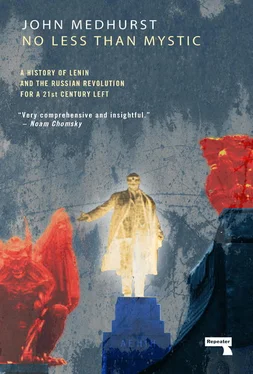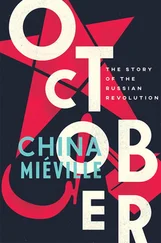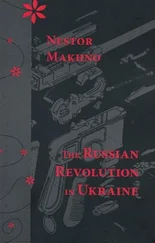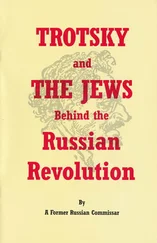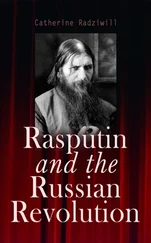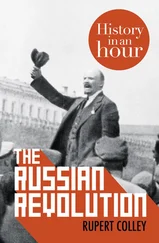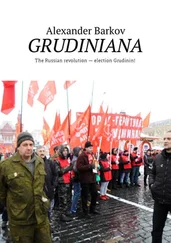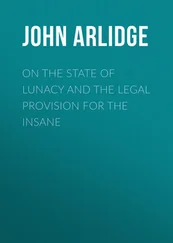On 6th-9th November, 1904 the Assembly, consisting of delegates from regional Zemstvos, met in several addresses around the capital and began to draw up plans for a new legislative body. It proved impossible to keep this a secret and messages of support flooded in. Mirsky presented the Tsar with a summary of the proposals of the Assembly, most important of which was the call for elected delegates from the Zemstvos to sit on the State Council (which Alexander II was considering just before his assassination) and a national Constituent Assembly with legislative powers. Nicholas’ response was that whilst he might expand the powers of the Zemstvos, he would never countenance a representative form of government.
The Social Democrats now had a choice. They could maintain socialist purity and refuse any working alliance with the liberals and the Zemstvo movement, or they could recognise the reality of Russia’s semi-feudal society and work towards a democratic capitalism, which as Marxists they still saw as the essential precondition for socialism. In November 1904, Iskra summed up the dilemma in a letter to party organisations. It admitted that in the Zemstvo liberals they had to “deal with the enemies of our enemy, who are not however willing or able to go as far in the struggle against him as is required by the interests of the proletariat”, but concluded that “within the limits of the struggle against absolutism, and particularly in its present phase, our attitude towards the liberal bourgeoisie is defined by the task of imbuing it with more courage and impelling it to join in those demands being put forward by the Proletariat led by Social Democracy”. 5
Axelrod explained that this meant working on joint campaigns and demonstrations with Zemstvo liberals and sitting on the Zemstvo Assembly to advance the demands and goals of a liberal-democratic revolution. As against Lenin’s demand that socialists must not in any circumstances work with the liberals, the Mensheviks’ tactics were relevant policies for the time and place. If successful they might have strengthened the opposition and led to the establishment of a progressive republic like France or a constitutional monarchy like Britain. At the very least they would have avoided the pitfall of a divided opposition and the rallying of the forces of autocracy.
One of the autocracy’s more subtle ideas had been to establish “Police Unions”, i.e. to create the façade of a trade union themselves, secretly resourced and run by the police. Yet the “Zubatov unions” (named after the Okhrana Chief who initiated them) escaped control. One of these, the Assembly of Russian Factory and Plant Workers, was run by the Russian Orthodox priest Father George Gapon, who was unaware he was a mere pawn of the Okhrana. Although Zubatov was dismissed in 1903 when one of his unions organised a general strike in Odessa, the wheels he had set in motion refused to be halted. By 1904 Gapon’s union had 11,000 members, more than the entire RSDLP. He was in contact with Zemstvo liberals, who advised him to present a petition to the government. In his memoirs he recorded, “But I did not think that such a petition would be of much value unless it were accompanied by a large industrial strike”. 6In perhaps the greatest example of blowback in history, Gapon organised his followers to take part in a march to the Winter Palace to beseech the “Little Father”–the Tsar–for help in their distress.
In January 1905 over 120,000 workers were on strike in St Petersburg. Despite instructions to desist, on 7th February, 1905 thousands of protestors followed Gapon to the Winter Palace to present the Tsar with a “Humble and Loyal Address” asking him to remedy their many grievances. Organised by Gapon and a group of union activists and SRs, women and children were placed at the front to ensure that troops did not fire on the demonstration. This had no effect on the Cossacks sent to stop the march. As the procession approached the Narva Gates the cavalry charged the demonstration and killed 40 people. The demonstration then surged into the Nevsky Prospect, by now an angry crowd of 60,000. The troops guarding the Winter Palace panicked and fired, mowing down men, women and children. Over 200 were killed and nearly 800 wounded. As the protestors staggered away from the bloodbath, the refrain heard from hitherto loyal peasant-workers was, “There is no God, there is no Tsar”. The 1905 Revolution had begun.
The blood had barely dried before a wave of strikes broke out in the Empire’s major cities, especially in the west where the leading anti-Tsarist organisation was the Jewish Bund. The Bund “threw its entire apparatus into the building of the revolution […] it put itself at the centre of the revolution and was largely recognised for it”. 7As a result its membership leapt to approximately 40,000. In Lodz, where nearly a third of the population was Jewish, it created nine new trade unions and organised radical student groups. The entire province of Lodz, which included other large towns, was soon brought to a standstill as over 100,000 workers took strike action to demand a democratic Constituent Assembly. Later, when the revolutionary tide receded, Tsarist and anti-Semitic groups would take their revenge on the province in a series of pogroms from which many fled to the US (where Bundists working in the heavily sweated New York garment trades helped form the International Ladies Garment Workers Union, one of the largest and most militant American labor unions).
The unrest was not confined to the cities. The sailors of the Black Sea Fleet Battleship Potemkin mutinied, cast off their officers and sailed to the revolutionary hotbed of Odessa. There they joined with striking workers before the Tsar’s forces moved in and carried out the infamous massacre on the Odessa Steps. Peasants, scenting the weakness of the traditional landowning class, staged rent strikes and illegal land seizures. By summer nearly 3,000 houses were destroyed and “Witnesses spoke of the night sky lit up by the blaze of burning manors and lines of horse-drawn carts moving along the roads, loaded with plundered property”. 8
In 1905-06 a rural revolution escalated across the Empire, with peasant unions and cooperatives springing up to take power from the landowners and their enforcers, the Land Captains. In Markovo and Suny autonomous “Republics” were proclaimed that constituted “free territories” of peasant self-rule. Some of these established new schools, food cooperatives and reading clubs. But not all peasant rebellion was progressive. Class violence was cathartic but undisciplined. The SRs worried that without a firm socialist consciousness to guide it the peasant revolution would peter out in vandalism and theft. Victor Chernov wrote in the SR journal in May 1905 that the party’s slogan should not be simply to “take the land” but to socialise it. He urged that after peasants took possession of the fields they ensured they were ploughed by the commune in an organised manner. He insisted:
The possession of the land, however, should consist not in the arbitrary seizure of particular plots by particular individuals, but in the abolition of the boundaries and borders of private ownership, in the declaration of the land to be common property, and in the demand for its general, egalitarian and universal distribution for the use of those who work it. 9
A giant step towards the “abolition of boundaries and borders of private property” was taken in July 1905 when the first congress of the All-Russia Peasant Union was held in Moscow, attended by over a hundred peasants from the provinces of European Russia, as well as delegates from the SRs and the RSDLP. The congress passed a resolution demanding the convocation of a Constituent Assembly elected by direct and universal suffrage, which would then finally settle the land question on an equitable basis. 10The peasants, through a mixture of their own independent initiative and the political direction of the SRs, had entered the political arena.
Читать дальше
